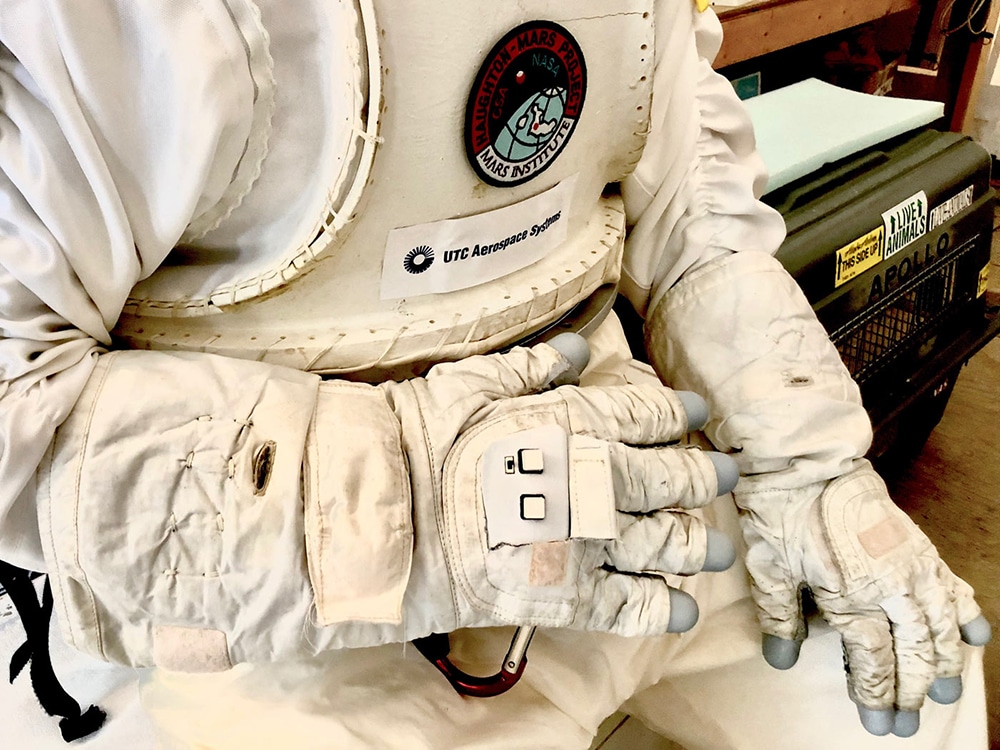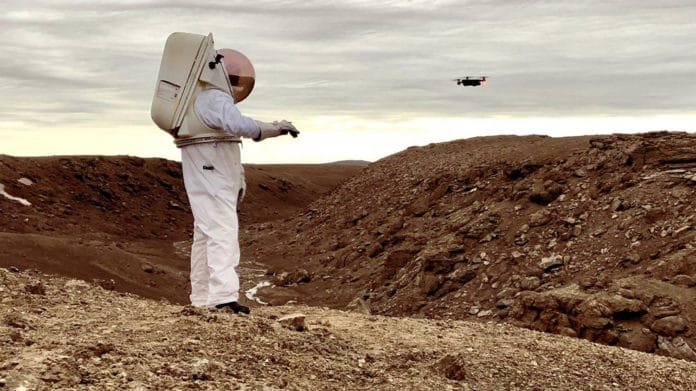In addition to more modern spacesuits for future space exploration over the next decade, NASA, along with some partner organizations, is developing the “Astronaut Smart Glove” for future human exploration of the moon, Mars, and other objects.
As scientists say, these smart gloves could allow women and men on missions to the Moon or Mars to control devices from a distance with hand gestures. This includes remote devices such as drones, and also other robots (which are not mentioned in detail).
Presented by the Haughton-Mars Project, the smart gloves are developed in partnership with the SETI Institute, Mars Institute, NASA Ames Research Center, Collins Aerospace and Ntention.
The equipment will be useful in performing tasks such as collecting samples and operating robots during space missions as the suit limits the accuracy and efficiency of astronauts’ movements. With gloves on, they will be able to perform more delicate tasks more easily.

It is a Norwegian startup Ntention that first worked on the design, which was then adopted by NASA and the SETI Institute to meet the needs of astronauts. The startup is known for the design and development of a smart glove that can control drones by simple hand gestures.
“A pressurized spacesuit is relatively rigid, and hand and finger motions meet with substantial resistance. In the “Astronaut Smart Glove”, the sensitivity of hand motions is adjustable and can be set high, which means the technology might be adaptable to a stiff pressurized spacesuit,” said Dr. Pascal Lee, director of the NASA Haughton-Mars Project at NASA Ames Research Center.
The Astronaut Smart Glove, which adopts a different approach, uses whole-hand gestures to interact with machinery instead of push buttons. It has many built-in sensors that detect all the movements of the astronauts’ hands and uses a micro-controller to read different kinds of sensors. The information is then transferred wirelessly to the device to be controlled.
This technology has already been tested successfully on Earth. However, this does not mean that it will work immediately on the Moon or Mars because of the different atmospheres and gravity levels.
“Astronauts on the Moon or Mars will want to fly drones for various reasons,” explained Lee. “For instance, to collect a sample that is out of reach or that needs to be isolated from contamination. Or to assist in a search and rescue operation. Over the past few seasons at HMP, we have been looking with NASA at how robotic flyers might assist astronauts in a variety of science and exploration tasks, including surveying, mapping, sampling, scouting, fetching, and inspecting.”
If all goes well, the new era of space exploration could be even more interesting than we thought.
